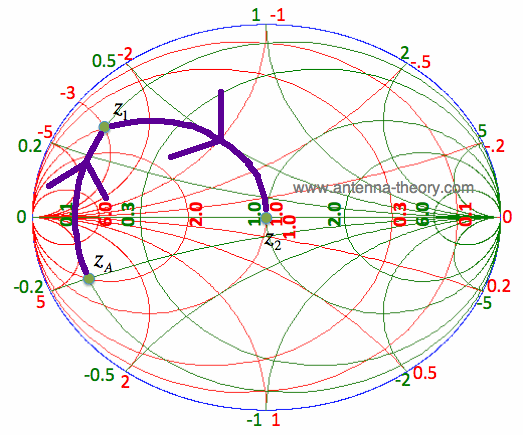

The simplest termination is either a short circuit or an open circuit. The R&SFPC1500 offers three times the value. The impedance to be synthesized is reactive so the termination must also be lossless. This measurement is easiest done using a vec- tor network analyzer (VNA) with a Smith chart display. A color PDF of the Smith Chart is available to download and print for use with pen and paper, or you can use it with your pen-based tablet to draw matching networks.= \jmath 140\:\Omega\). Examples in the lecture are followed by our exclusive online workbook exercises which integrate a concise review of formulas with interactive calculators to help you work on class exercises. Smith Chart numbers are normalized, which means that they have been divided by the system impedance before being plotted. A Smith chart is a type of graph used to plot the normalized impedance of a circuit, a circuit element, or an interconnect. Smith Charts are also available designed for 50 with 50 at the center instead of the 1.0 that we show for the normalized chart. Once you have gotten familiar with the layout of the chart and have some intuition from working with the aid of the software, we can move on to working with the chart more in-depth and perform the calculations manually. the impedance by 50, to normalize the impedance. Our exclusive online workbooks combine a review of principles along with exercises utilizing the online Smith Chart web app. The use of transmission lines is also explained with the aid of the software performing the calculations. Next with four basic rules and software written by the instructor, you will be able to create matching networks on the chart almost immediately. You will start with an overview of how the Smith Chart circles are derived and what they mean, along with a basic orientation of short and open circuit terminations, inductances, capacitance, etc. This course will introduce you to the Smith Chart and how it relates the reflection coefficient to impedances and admittances.


 0 kommentar(er)
0 kommentar(er)
